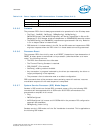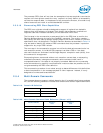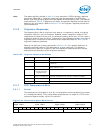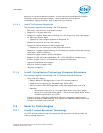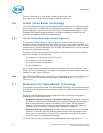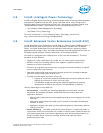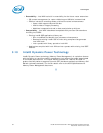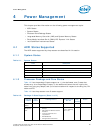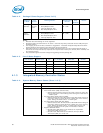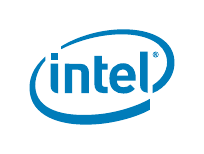
Intel® Xeon® Processor E5-1600 v2/E5-2600 v2 Product Families 79
Datasheet Volume One of Two
Technologies
partitions in the same operating system, or there can be multiple operating system
instances running on the same system – offering benefits such as system
consolidation, legacy migration, activity partitioning or security.
3.1.3.1 Intel VT-d Features Supported
The processor supports the following Intel VT-d features:
• Root entry, context entry, and default context
• Support for 4-K page sizes only
• Support for register-based fault recording only (for single entry only) and support
for MSI interrupts for faults
— Support for fault collapsing based on Requester ID
• Support for both leaf and non-leaf caching
• Support for boot protection of default page table
— Support for non-caching of invalid page table entries
• Support for hardware based flushing of translated but pending writes and pending
reads upon IOTLB invalidation.
• Support for page-selective IOTLB invalidation.
• Support for ARI (Alternative Requester ID - a PCI SIG ECR for increasing the
function number count in a PCIe device) to support IOV devices.
• Improved invalidation architecture
• End point caching support (ATS)
• Interrupt remapping
3.1.4 Intel® Virtualization Technology Processor Extensions
The processor supports the following Intel VT Processor Extensions features:
• Large Intel VT-d Pages
— Adds 2 MB and 1 GB page sizes to Intel VT-d implementations
— Matches current support for Extended Page Tables (EPT)
— Ability to share CPU's EPT page-table (with super-pages) with Intel VT-d
— Benefits:
• Less memory foot-print for I/O page-tables when using super-pages
• Potential for improved performance - Due to shorter page-walks, allows
hardware optimization for IOTLB
• Transition latency reductions expected to improve virtualization performance
without the need for VMM enabling. This reduces the VMM overheads further and
increase virtualization performance.
3.2 Security Technologies
3.2.1 Intel® Trusted Execution Technology
Intel TXT defines platform-level enhancements that provide the building blocks for
creating trusted platforms.



